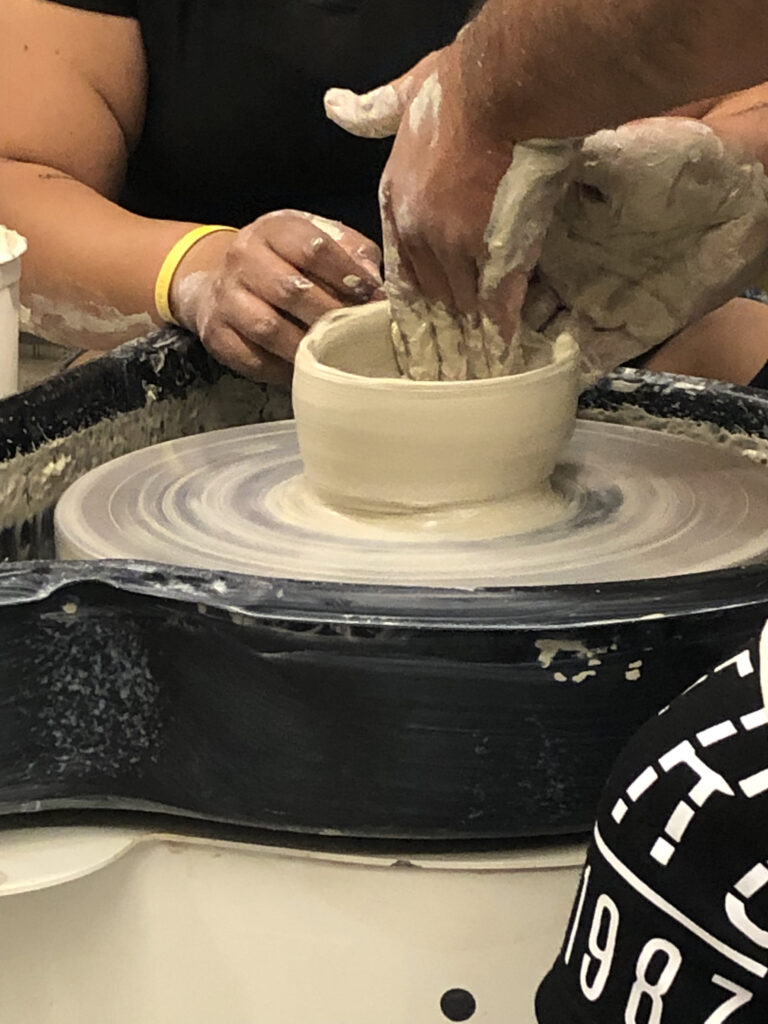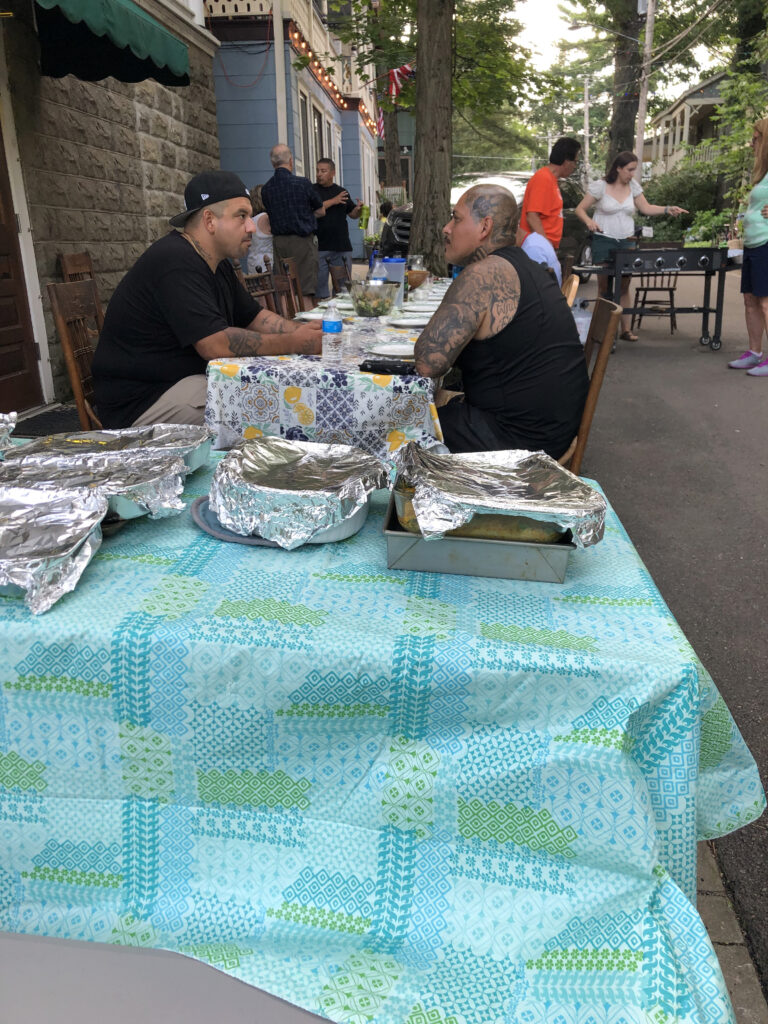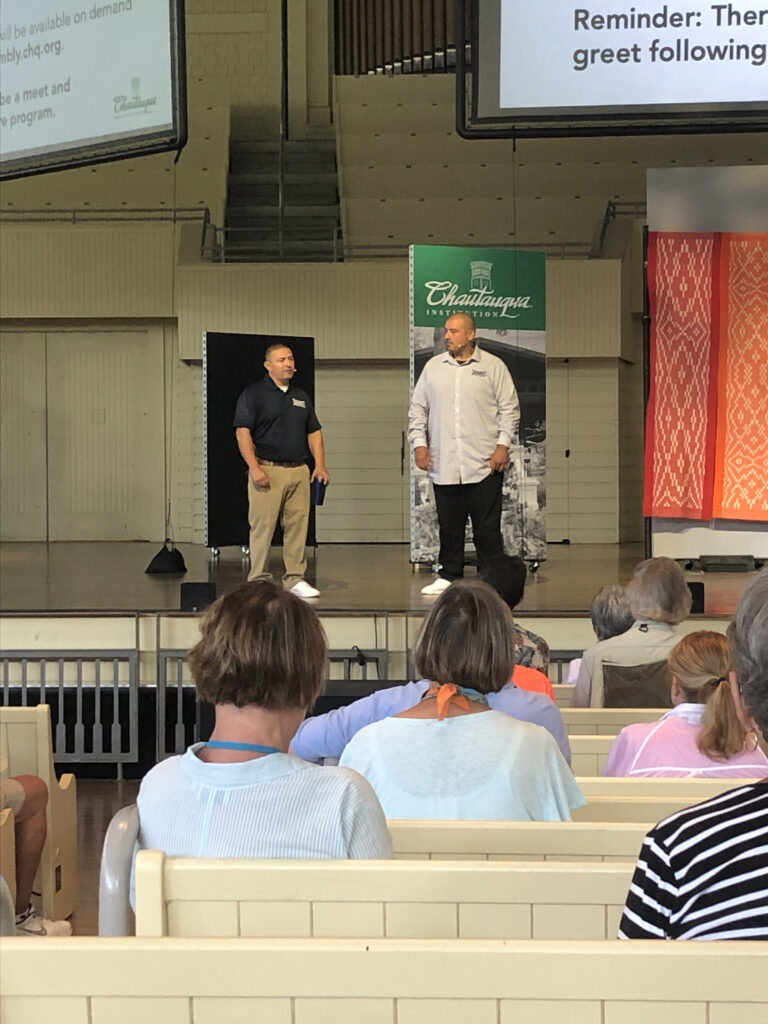
by Emily Provance, Friend in Residence
“I was trying to make a vase,” the woman said, “but the clay wanted to be a cream
pitcher. It had a lip around it, no matter what I did. So now I have a cream pitcher. And
it’s beautiful.”
The next night, well after dark, I found myself in the ceramics studio, watching a
Homeboy make a cereal bowl. “Hey, turn on ‘Unchained Melody,’ like in Ghost.”
With some fumbling, somebody pulled it up on a cell phone.
“Nah, it’s too quiet. Turn it up.”
“Put the phone in a pot,” I said. “It’ll be louder.”
I need your love . . . I need your love . . . God speed your love . . . to meeeeee . . .
(Imagine here a roomful of off-key singers.)

Our theme this week was “empathy.” I had no idea it would involve so much sculpting.
Chautauqua includes a number of arts programs, drawing from an extraordinarily
accomplished international student population: opera, dance, theater, instrumental
music, writing, visual arts. The students don’t mix with everyone else as much as you
might think, but this week, I found myself invited to the art studios, where I met a few
dozen visual artists (painters, sculptors, weavers, multimedia artists), of every race and
gender, ages eighteen to sixty-two. Their work seems to happen when the sun goes
down: art about identity, history, equity, immigration, stories, people, nature. Every
artist has a private studio, but they move freely in and out between them, learning and
talking and playing and laughing. That night, me too, along with the homeboys.

The homeboys, of Homeboy Industries, are formerly incarcerated gang members who
now work for the largest gang recovery organization in the United States. Two of them
spent the week at Quaker House. Homeboy Industries has a jobs program, mental
health services, addiction services, a high school, a GED program, tattoo removal, and
a whole lot more. Their personal stories are powerful and not mine to share, but what I
loved most was hearing them talk about their work. “It’s all about relationships.” I heard
that maybe a thousand times. “Love is at the center of everything. We learn how to
trust. Humor is healing.”

And, more specifically: “We don’t fire nobody. Somebody has a behavior that’s a
problem, we ask, ‘What’s that behavior communicating?’ If somebody tests positive for
drugs, we say, ‘Hey, there’s something going on in your life that is causing that
behavior. We got a program to help you figure that out. Your job will still be here
waiting when you get back.’”
If somebody declines the help, they can walk away. “But we’ve learned,” the homeboys
told me, “it’s not if they come back, it’s when they come back. Because now they know
there can be another way. If they don’t die and they’re not in prison, they’ll come back
to us. They know they can be loved.”

Our Tuesday morning speaker, Frans de Waal, talked about empathy in primates. He
showed us a video of a famous experiment in which two Capuchin monkeys are in
cages side by side. They are each asked to do a simple task—retrieve a rock—and for
doing so are given food rewards, either cucumbers or grapes. If both capuchins get
cucumbers, they’re both fine. If both Capuchins get grapes, they’re both fine. But if one
gets a cucumber and the other gets a grape, the Capuchin with the cucumber pitches a
fit. How come the other guy gets super-yummy grapes? The Capuchin will eventually
throw the cucumber, refusing to accept an inferior reward.
De Waal suggests this is evidence of empathy, but to me, it’s not empathy until you do
the same experiment with chimpanzees—because, in the case of chimpanzees, the
animal with the superior reward will also protest the inequity. He’ll refuse the grape
unless his neighbor gets one, too. That fits the definition of empathy: understanding
another’s feelings and sharing them.
“I was trying to make a vase,” the woman said, “but the clay wanted to be a cream
pitcher.” I heard this story at Quaker House from a woman dropping by. It felt like it
captured the theme of the week. Rather than demand a vase, she listened to the clay
on her wheel. If it wanted to be a cream pitcher, well . . . a pitcher can be beautiful, too.
I’ll finish with a quote from one of this week’s morning worship liturgies: “Who needs you
to listen deeply to them today? Who do you need to listen to you?”
Who needs to you listen deeply to them today?

